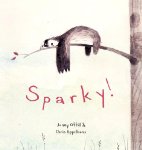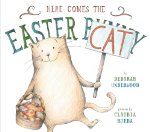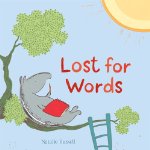When I was little, I played countless games with my friend Raf where we pretended that we were animals. We both loved animals and read a great deal about them, so we tried to make our pretend animal selves as true to life as possible. We also argued about the animal facts that we knew, and often turned to the school library encyclopedia to settle these arguments.
As they read today's poetry title children will get the chance to image what it would be like to be an animal. Would they still have some of the same feelings and thoughts, or would they be quite different?
 When I am not myself
When I am not myself
As they read today's poetry title children will get the chance to image what it would be like to be an animal. Would they still have some of the same feelings and thoughts, or would they be quite different?
 When I am not myself
When I am not myself
Kathy DeZarn Beynette
Poetry Picture Book
For ages 5 to 7
Pomegranate Kids, 2014, 978-0-7649-6673-6
What would it be like if you were not you, and if you
were an alligator instead? Or a rabbit?
Or a giraffe? Your world would certainly be different, but you might
feel or think many of the things that you feel and think in your life now.
If you were a
zebra you might like your stripes but wish that you could try “checks for a
day.” If you were a bear you might “patiently wait / For the day my brother /
Will go hibernate.” If you were a kitten you might find yourself sitting in a
row and waiting for “someone to love / For someplace to go.”
In this charming
collection of poems the author lets us step inside the bodies of a variety of
animals and helps us to see the world through their eyes for a moment or two.
Sometimes the thoughts we have as animals are not that different from the ones
we have as humans, and sometimes the thoughts are familiar and yet comically or
cleverly different because of the nature of the animal in question.




















